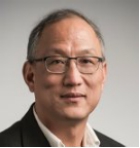Theoretical Investigation of Stable Pb-free Halide Perovskite Materials for Solar Cell Applications
Su-Huai Wei
Beijing Computational Science Research Center, Beijing, China
ABSTRACT
Halide perovskites such as CH3NH3PbI3 have recently emerged as promising materials for low-cost, high-efficiency solar cells. The efficiency of perovskite-based solar cells has increased rapidly, from 3.8% in 2009 to more than 22% recently by modifying material compositions and engineering cell architectures. The emergence of high efficiency perovskite solar cells can be attributed to the intrinsic properties that distinguish them from conventional semiconducting solar cell absorber materials. However, despite the enormous progress of the perovskites in solar cell applications, challenges are still standing in their way to large-scale commercial applications, including their poor long-term stability, especially under heat and humidity conditions, which could be partially attributed to the intrinsic thermodynamic instability of CH3NH3PbI3 and related materials, and the toxicity of Pb, currently used in halide perovskite based solar cells with high power conversion efficiencies. Recently, various approaches have been proposed to overcome these bottlenecks, including elimination of the organic molecules, alloying on anion and/or cation sites, and atomic transmutation, and high throughput calculations have been carried out in hope of finding stable, Pb free perovskites for high efficiency solar cells. In this talk, I will discuss some of our recent theoretical investigations to provide theoretical insights and possible solutions to these issues.
DOI:10.12110/firstfmge.20171121.103

Su-Huai Wei received his B.S. in Physics from Fudan University in 1981 and Ph.D. from the College of William and Mary in 1985. He joined the National Renewable Energy Laboratory in 1985 and was a Laboratory Fellow and Group Manager of the Theoretical Materials Science Group before he joined the Beijing Computational Science Research Center in 2015 as Head of the Materials and Energy Division through the China National “Thousand Talent Program”. His research is focused on developing electronic structure theory of materials, especially for semiconductors and energy related materials and applications. He has published more than 450 papers in leading scientific journals, including 68 in Physical Review Letters with more than 40,000 citations and an H index of 100. He is a Fellow of both the American Physical Society and the Materials Research Society.